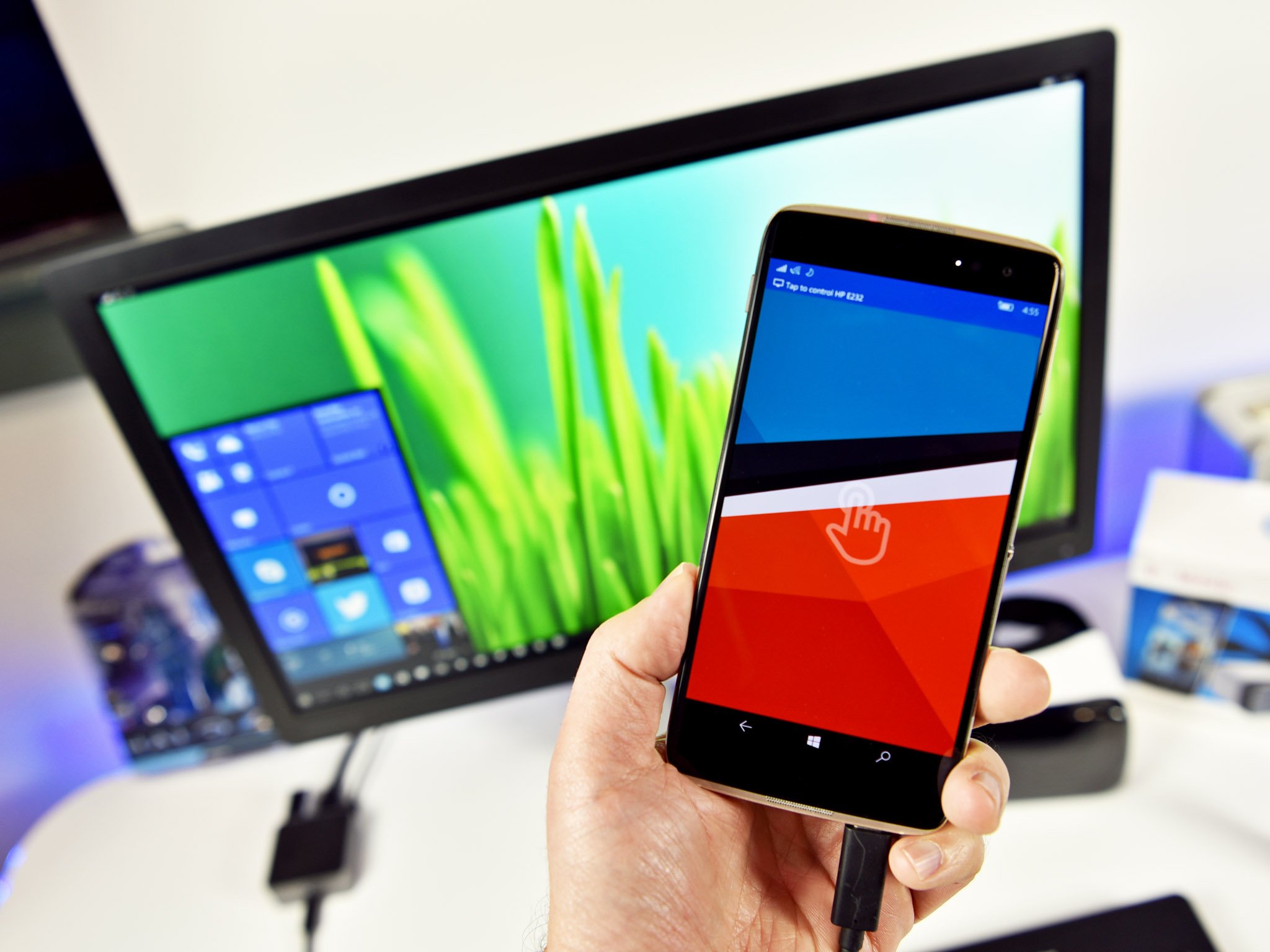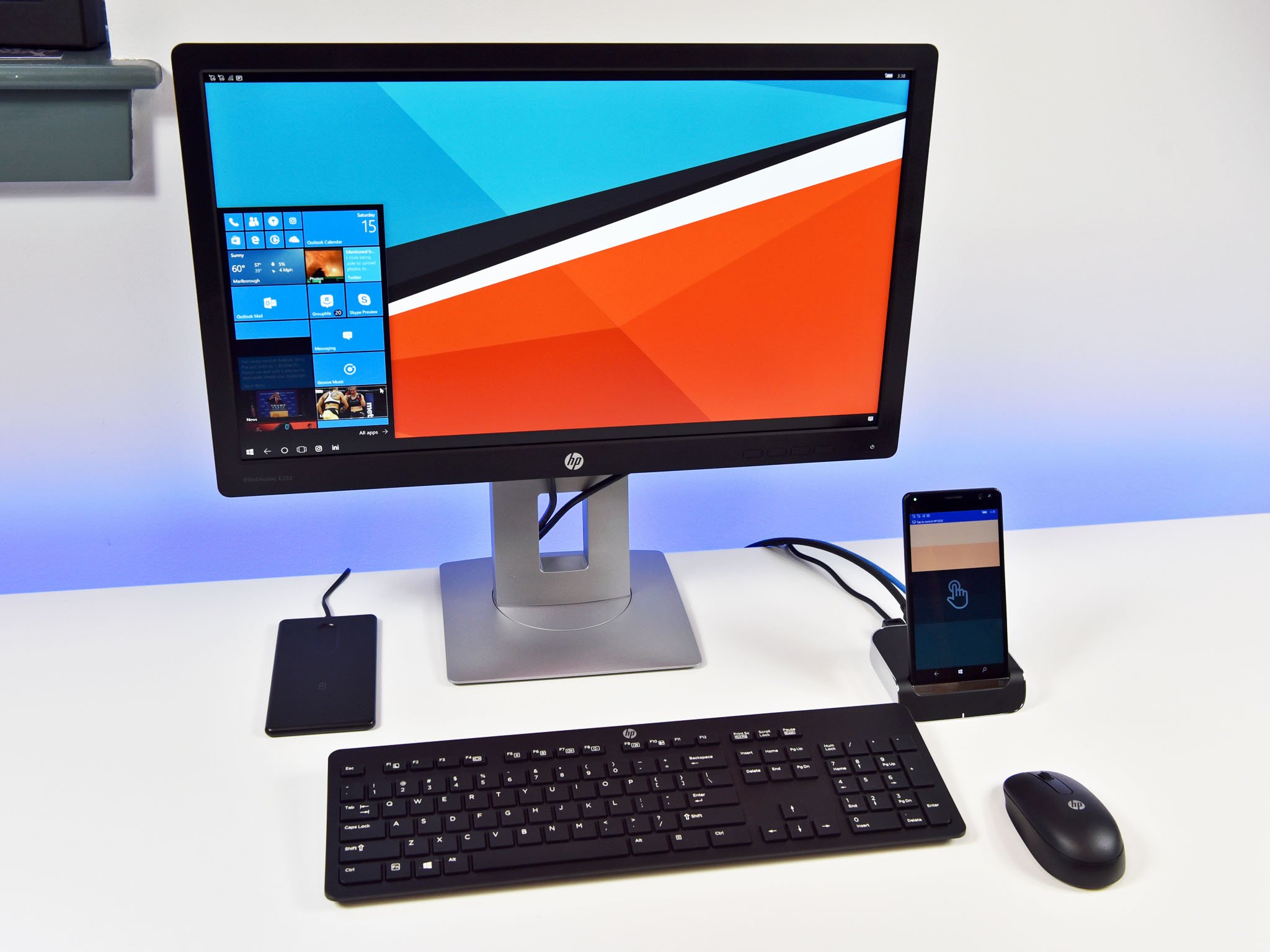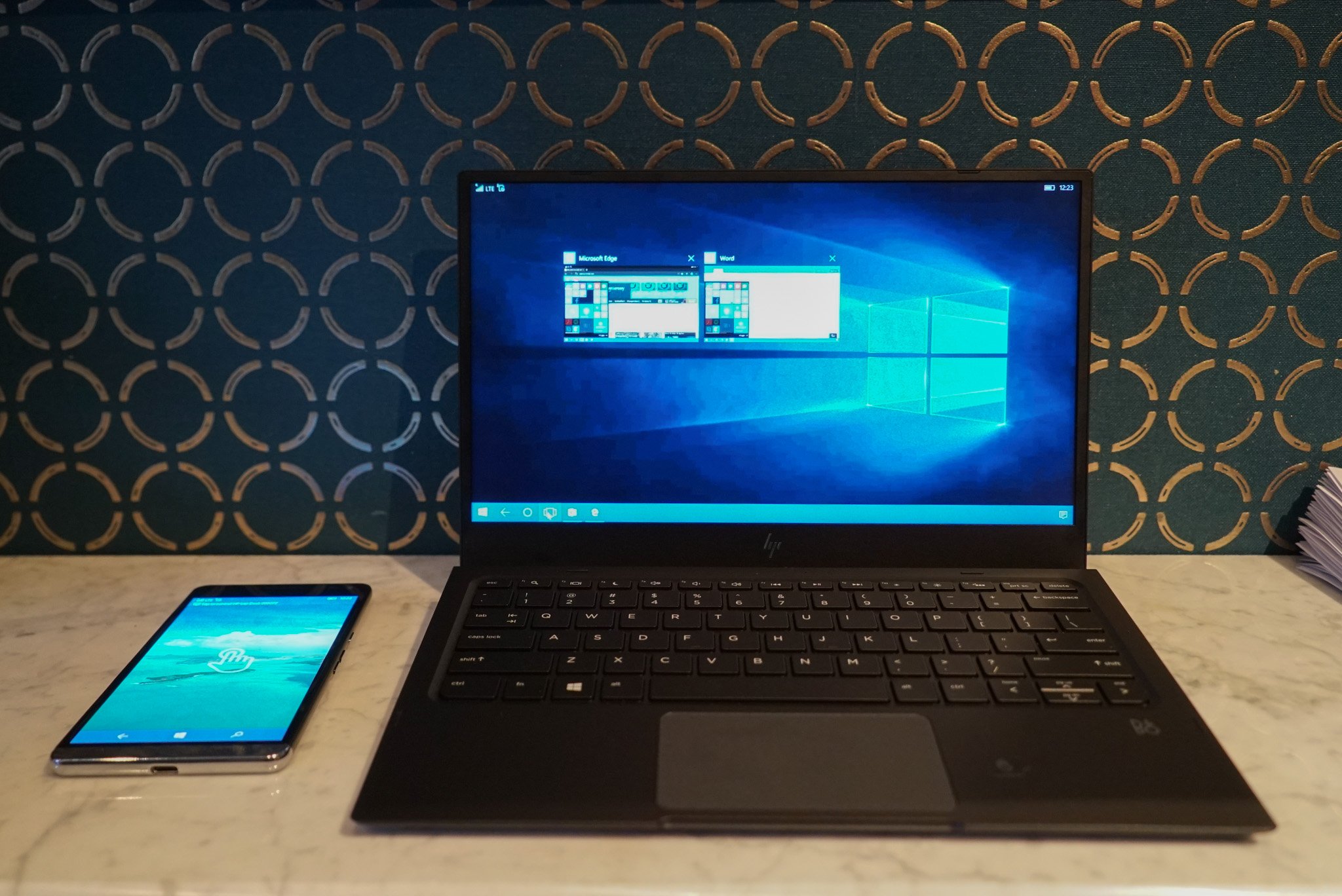Windows 10 Mobile could get full x86 app emulation for 'Redstone 3' by late 2017
A new report suggest 'Project Cobalt' may be the path forward for x86 apps on Windows 10 Mobile

Microsoft still has big plans for Windows 10 Mobile Continuum despite the near abandonment of the consumer market for the last 18 months. As to how Microsoft plans to evolve and make Mobile viable remained a mystery, but a new report today begins to highlight the path.
A new report from Mary Jo Foley at ZDNet claims that Microsoft is aiming to build in x86 emulation into an ARM64 device. That means that a Continuum phone could run actual desktop apps when docked to a monitor or laptop completing the 'PC in your pocket' metaphor.
Project Cobalt is a name we have heard ourselves internally as "something to be excited about," but until now details about what it is was unclear. In a tweet from @h0x0d ('WalkingCat') reference for "CHPE" was found regarding "Windows's hybrid x86-on-ARM64". Foley cites her sources that "C" stands for "Cobalt" while the "HP" is literally for the company HP and possibly about the Elite x3 (that device reportedly will be supported and produced for at least two years). The "E" in "CHPE" could be a direct reference to "Emulation."
Reports for ARM64 support (64-bit Windows 10 Mobile) go back to January 2016. That support is needed to get past the 3.5 GB RAM limit currently being hit by devices like the Elite x3 and Idol 4S.
Currently, devices like the HP Elite x3 rely on cloud-based emulation through HP Workspace. While the solution works well enough having native emulation would be much more ideal.
Additionally, we have heard from our sources that three reference boards are in development by Microsoft for Mobile with one running MSM8998 (aka Snapdragon 830). That chipset is rumored to support 8GB of RAM with a 10nm process down from the current 14nm.
Interestingly, the Snapdragon 830 (now called Snapdragon 835) is not expected for release until later in 2017 around the same time as Windows 10 'Redstone 3', which follows the Creator's Update due in the Spring. Per Foley, Redstone 3 is where we will see Cobalt take form lining up with some new hardware possibly from partners like HP.
Get the Windows Central Newsletter
All the latest news, reviews, and guides for Windows and Xbox diehards.

While we won't reveal the codenames for the other two Microsoft Mobile engineering designs, we can hint that they are astrological in nature. That clue will come back later for another astrological codename that revolves around further significant shell developments within Continuum.
The three engineering designs are not necessarily indicators that Microsoft will release those as consumer or enterprise products. Rather, they are testing units meant for OS evaluation and development of new features for Mobile.
Windows 10 Mobile on x86 too?
We also hear from a reliable source that Windows 10 Mobile could also be positioned on actual x86 hardware. We have been told that Microsoft has a "Windows 10 Mobile x86 dev kit", but it is unclear what they are doing with it.
Building in x86 emulation ("Cobalt") into Windows 10 Mobile could open the door for Chromebook competitors. While these 'lite' laptops would run Windows 10 Mobile for improved battery life and faster performance they could also run real desktop apps via x86 emulation.

Google is limited to running only phone apps on its laptops neutering their power for "real" work by companies.
Mobile is still the future
One thing should be clear from all the recent leaks: Windows 10 Mobile is not only alive and kicking, but Microsoft has some big plans for it.
Being able to emulate x86 apps in particular environments while keeping the benefits of ARM is the dream scenario for enterprise and prosumers. While x86 may be on the way out for consumers, it is legacy users who need support for the next 5 to 10 years while the Universal Windows Platform (UWP) evolves and replaces that architecture.
Phones that can emulate desktop apps in Continuum and laptops that run a Mobile OS with Cobalt makes the Windows 10 Mobile gambit suddenly a strategic win for Microsoft. Nonetheless, the company has a lot of engineering ahead to get from where we are today to that point.
Recent demonstrations of what's coming next to Continuum demonstrate that the blurring of what is Mobile and what is Desktop will only increase until the distinction fades in 2018.
As to any Surface Phone (or Mobile) rumors, there is no new information to add. It should be clear that if and when Microsoft releases a mobile Surface device it will showcase these and other abilities (see 'Why Microsoft keeps working on Windows 10 Mobile: ARM, cellular, and the next big thing'), but there is no indication that such a device will be out in the next few months. Indeed, Zac Bowden and I have heard that things could be pushed back until 2018.
All we know at this time is Windows 10 Mobile looks to become a lot stronger in the next 12 months.

Daniel Rubino is the Editor-in-chief of Windows Central. He is also the head reviewer, podcast co-host, and analyst. He has been covering Microsoft since 2007 when this site was called WMExperts (and later Windows Phone Central). His interests include Windows, laptops, next-gen computing, and wearable tech. He has reviewed laptops for over 10 years and is particularly fond of 2-in-1 convertibles, Arm64 processors, new form factors, and thin-and-light PCs. Before all this tech stuff, he worked on a Ph.D. in linguistics, performed polysomnographs in NYC, and was a motion-picture operator for 17 years.
